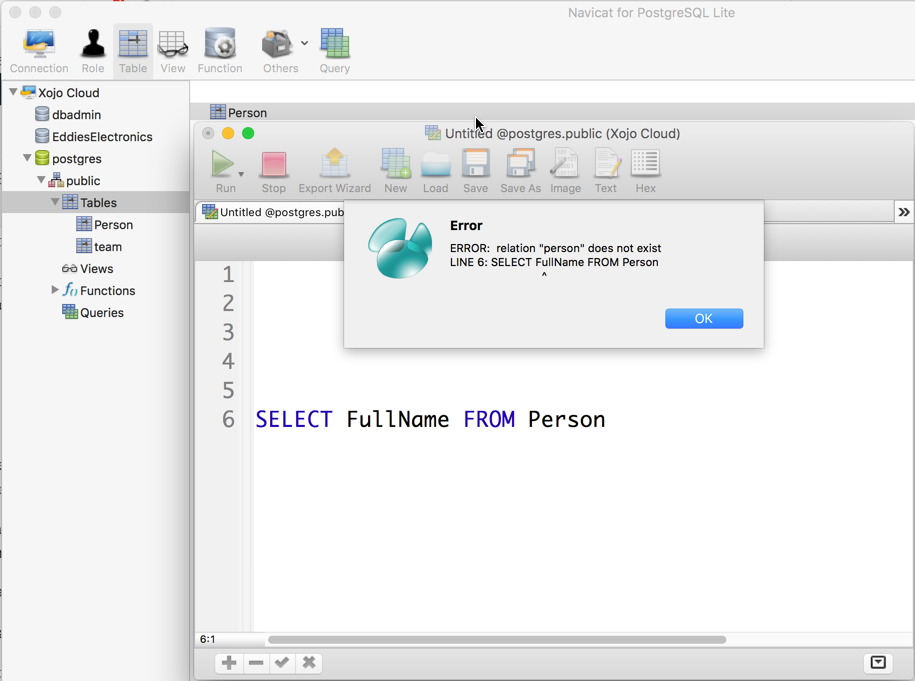Noted recently at the SQLizer blog, the SQL language was first created 43 years ago. And what is remarkable about that is that SQL is still used today. According to the Stack Overflow 2017 developer survey it is the #2 programming language. Not many languages remain in use for such a long period of time. Although we’re happy to also note that Xojo celebrated our 20th anniversary in 2016!
Comments closedTag: SQL
I’ve ran into PostgreSQL case sensitivity myself before and I’ve seen it come up on the forums, so I thought it might be a good thing to bring up here.
Sometimes you hear that PostgreSQL is case-insensitive, but it isn’t really. What it actually does is convert your SQL to lowercase by default. So take a look at this SQL:
SELECT FullName FROM Person
This gets converted to:
SELECT fullname FROM person
That is nice if you happen to like to write your queries with mixed casing.
Comments closedPaul talks with Carol Keeney of BKeeney Software about databases, requirements analysis, agile/scrum and much more.
1 CommentUsing databases with web apps is not much different than using them with desktop apps, but there are a few things to keep in mind. The most important thing to note is that a web app allows multiple users. This means you’ll want your database connection to be unique for each user that connects to the web app, rather than global to the app itself (as is common in desktop apps). The simplest way to ensure this is to create the connection to your database in the WebSession.Open event handler, saving a reference to the connection as a property that you add to WebSession.
6 CommentsMaybe you’ve heard the term SQL injection and how it can allow unintended database access. Here’s how a SQL Injection works and what you can do to avoid it.
1 CommentEveryone loves SQLite. It is everywhere, it is fast and it is easy to use. Want to know how to make it even faster?
Comments closedFormatting SQL for display can sometimes be a pain, particularly for the many different flavors of SQL. One easy way to do the formatting is to use a web service.
Comments closedOne of the most popular Xojo Cloud feature requests was to add database support. On Tuesday Feb 10th, we added MySQL and Postgres databases for Xojo Cloud. In addition to having a database server right on your Xojo Cloud server, we have also enabled the creation of SSH Tunnels so you can connect directly to the databases using a 3rd party management tool.
Comments closedSQLite has the ability to do full text searching and this feature is available with Xojo. Read on to learn how to best use it!
Comments closedXojo can connect to a wide variety of databases, including: SQLite, PostgreSQL, MySQL, Oracle, Microsoft SQL Server and pretty much anything else using ODBC. A must-read for anyone building their first database application.
Comments closed
